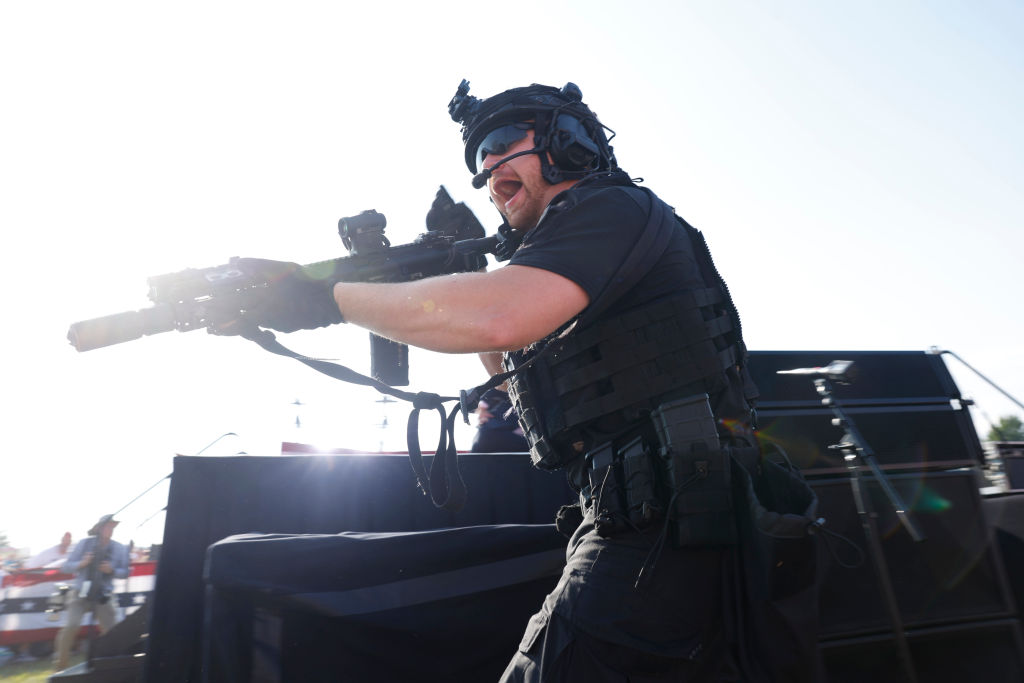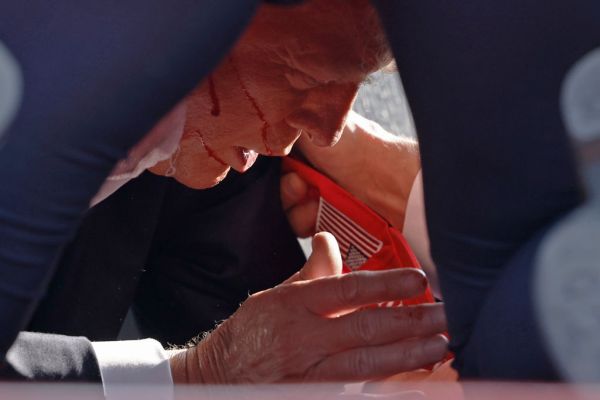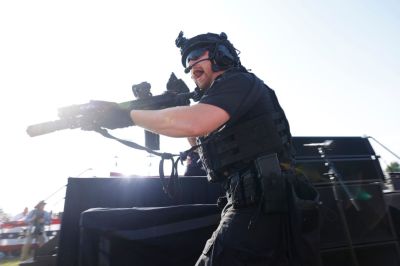After a gunman shot former President Donald Trump at a campaign rally and killed an attendee, federal officials are investigating the security lapses that allowed the assassination attempt in the first place.
“I’ve directed an independent review of the national security at yesterday’s rally to assess exactly what happened. And I’ll share the results of that independent review with the American people,” President Joe Biden said Sunday. According to NBC News, the House Oversight Committee has already asked Secret Service Director Kimberly Cheatle to testify at a hearing on July 22.
How Does the Secret Service Secure a Campaign Event?
Just because Trump is no longer in office does not mean he has less protection than other officials. “Former President Trump will have all the assets that a sitting president gets,” said Jeff James, a former Secret Service assistant special agent in charge. “He has armored cars and snipers and bomb dogs and everyone going through the event will [go] through metal detectors. … Once you have the presumptive nominee, and they are locked in, they get all those assets.”
Preparation for an event like Trump’s rally on Saturday starts with the Secret Service’s advance team scouting out the location. “They will draw up a security plan for that venue,” said former Secret Service agent Anthony Cangelosi, who has been involved with protective details for former presidents. “And this is done days in advance.”
The site agent—the Secret Service agent who would work directly with the campaign—coordinates what time the event will take place, when transportation arrives, how many magnetometers are needed for security checkpoints, where agents will be posted, and other details.
“They’ll figure out what the vulnerabilities are, what the strengths of the location are, ingress, egress, helicopter landing sites, mass trauma capabilities nearby and hospitals, what type of local law enforcement or state law enforcement support will they have, what type of other events do they have going on around the country which may stress their own assets there,” said Robert Sanders, a distinguished lecturer of national security at the University of New Haven in Connecticut.
Agents are assigned posts at a certain location, which will be on a security plan diagram. Cangelosi explained that on the day of the event, these “post standers” will arrive several hours before even the personal protection detail arrive and do a bomb sweep of the venue. After this, these agents, who are both inside and outside the perimeter of the event, will remain at their posts for the duration of the event.
Secret Service agents are organized in particular teams with particular responsibilities. If a problem arises inside the perimeter, the protective detail protects the protectee—in Saturday’s case, Trump—and gets him to safety. The tactical response team then attacks the threat, according to Sanders.
The Secret Service also protects the outside of the venue, often with the help of local and state law enforcement. Any area that might pose a potential threat—like a building with a line of sight to the protectee—will likely require an agent to be posted nearby. Snipers on the countersniper team also cover longer distances thousands of feet away. These snipers are looking for long-range threats, and if they see something suspicious, the countersniper response team can help them investigate, according to James. “If those agents see a threat,” he said, “like, say, they had seen [the shooter] laying down in the prone position ready to fire, they could call directly to the snipers, and the snipers could immediately engage.”
What Broke Down at Trump’s Rally?
The main question regarding Saturday was how law enforcement failed to stop a shooter from accessing the top of a building 400 to 500 feet away from where the former president was speaking. The Secret Service had identified the building as a possible vulnerability and gave responsibility of covering it to local law enforcement, NBC News reported Sunday.
“I can’t understand why you would not position a post stander—again, maybe not a Secret Service agent, but a local law enforcement officer or two, or something like that—on that rooftop,” Cangelosi said.
Analyzing the Secret Service’s plan will be a focal point of the investigations now underway. “You know, it really comes down to the security plan and how it’s executed,” Cangelosi said. “You can have a security plan, but if it’s executed poorly, that’s another story. And I think it’s one or the other here. Something’s amiss, right? This should not have happened.”
Local law enforcement and the Secret Service have disagreed over who was supposed to secure the building the gunman fired from. Secret Service spokesperson Anthony Guglielmi told NBC News that the Secret Service placed the roof under the jurisdiction of local law enforcement. But Butler County District Attorney Richard Goldinger said anything outside the venue’s perimeter was to be secured by the Secret Service.
Absent an officer posted on the roof of the building where the shooter was perched, officers close to the building would have stood the best chance of being able to stop the shooter, according to James—even more than snipers, whose focus is farther away. “Everybody’s showing that map on TV that shows where the shooter was, where the president was, and where the Secret Service sniper teams were. I’ve heard [the shooter] was anywhere from 130 to 160 yards away,” James said. “What you’ve got to understand, though, is you have to blow that picture up 10 times, because our snipers are looking out to 1,000 yards.”
The Secret Service snipers may have actually been looking past the shooter, given how close he was. In a situation where each second is critical, Secret Service snipers also may not have been able to easily confirm that the gunman was a threat as soon as they spotted him. Agents don’t have to wait until a suspect opens fire before they can, but they still must assess whether someone is a threat before acting. “You want to be certain before you take that shot,” Cangelosi said. “They may not have been able to verify that this person was a threat that quickly.”
Reports and videos posted to social media have indicated rally attendees spotted the gunman before he fired and pointed him out to police. The Associated Press reported that a local police officer tried to confront the shooter on the roof seconds before he fired. Communicating about a threat between agencies may only take a few seconds, but on Saturday, that’s all the time the shooter needed.
After the gunman opened fire, Secret Service near Trump sprung into action, encircling the former president and telling him to get down on the ground while snipers killed the gunman. “They did a great job at first,” James said. “But I really would have liked to have seen them get him moving more quickly off the stage.” When Trump stopped to pump his fist, he was vulnerable to possible follow-up attacks. “He’s exposed,” James said. If there had been more shooters, “you’re a sitting duck now.”







Please note that we at The Dispatch hold ourselves, our work, and our commenters to a higher standard than other places on the internet. We welcome comments that foster genuine debate or discussion—including comments critical of us or our work—but responses that include ad hominem attacks on fellow Dispatch members or are intended to stoke fear and anger may be moderated.
With your membership, you only have the ability to comment on The Morning Dispatch articles. Consider upgrading to join the conversation everywhere.